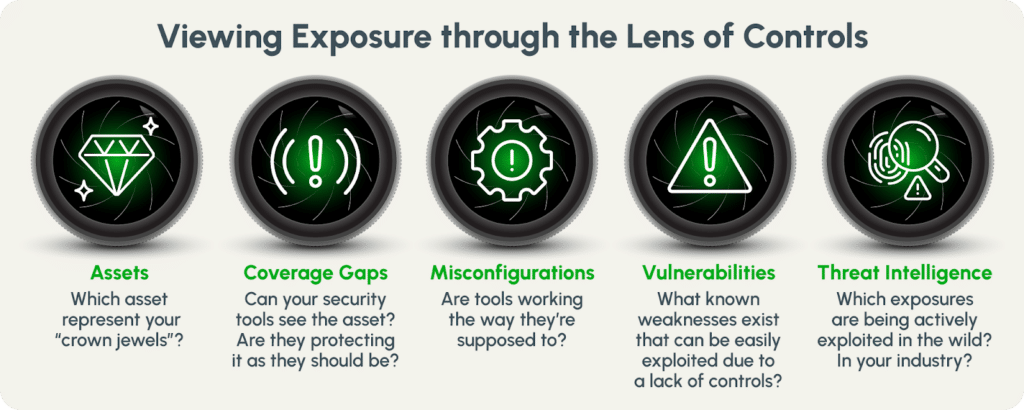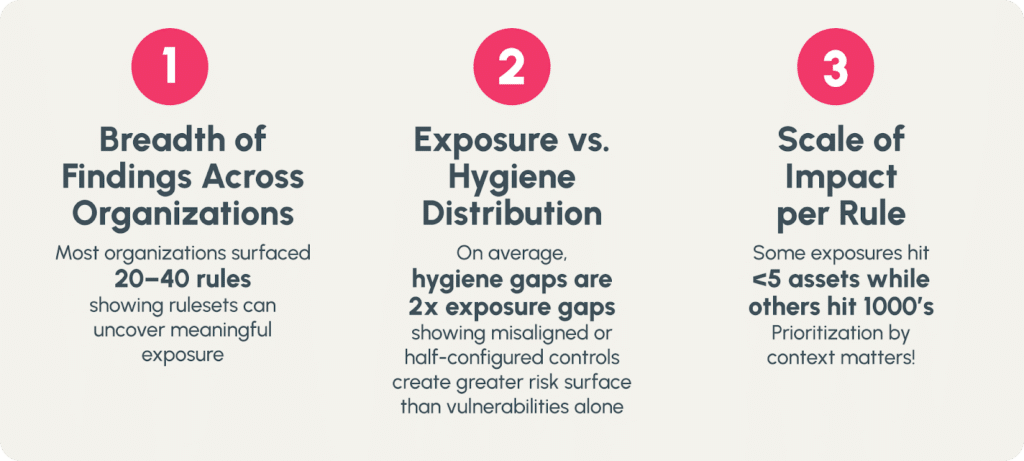back to blog
BLOG Nov 24 2025
Which Exposure Takes Priority? Viewing risk through the lens of controls
Sofia Piedrahita

Table of Contents
Modern security teams often see vulnerabilities but lack a clear picture of how well their controls reduce real risk. CTEM broadens exposure management, but programs stall when they cannot connect assets, threats, vulnerabilities, and controls into one cohesive view. Prioritizing exposure through a control-first lens highlights the gaps that truly matter and accelerates mitigation. Nagomi’s Control Platform provides the missing execution layer that turns fragmented visibility into clear, risk-driven action.

Continuous Threat Exposure Management, or CTEM, does what its name promises. It moves past a focus on known vulnerabilities and works to identify, prioritize, and reduce all digital exposure in a continuous cycle. Gartner introduced CTEM in 2022 and described it as an ongoing process for improving an organization’s overall security posture instead of juggling separate practices like vulnerability management and attack surface management in isolation.
Most enterprises already perform pieces of CTEM through VM, ASM, and breach and attack simulation. Fewer than one third have built full CTEM programs. Some efforts stall because teams lack time, skills, or budget. Others slow down because organizations struggle to see and rank risk through the combined lens of what is exposed and how well it is protected.
Many teams can see vulnerabilities and measure controls, although few link the two to understand which weaknesses matter. Connecting those pieces requires two steps:
Viewing Risk Through the Lens of Exposure
Exposure management remains vulnerability-centric with CVEs dominating dashboards in SOCs of all sizes. Analysts know their digital exposure extends beyond vulnerabilities–that it encompasses any weakness in the environment that lets threats take hold and move laterally.
Your CTEM program should take this broader view of exposure to help find, prioritize, and mitigate these conditions that don’t get tracked as “classic” vulnerabilities. This means taking a multi-faceted view of risk that includes:
- An asset-centric view achieved by building a comprehensive map of exposed assets across your entire attack surface.
- A control-centric view shows coverage gaps and whether your stack can effectively mitigate or compensate for exposures, misconfigurations, and whether existing tools are working as expected.
- A vulnerability -centric view shows vulnerabilities in your environment and, if possible, which ones really matter.
- A threat-centric view adds context from real attacker behavior, active campaigns, and likely attack paths so teams understand how an adversary will move once they gain a foothold.
Your SecOps team needs all four views to build an exposure management program that reflects reality. Each view explains something the others cannot. They work together because attackers never rely on a single weakness. They move through assets, misconfigurations, unpatched flaws, and soft spots in controls as one connected chain. Your team needs the same connected picture if you expect to break that chain before an attacker takes advantage of it.
So, Where are The Biggest Gaps?
Of these, the one that rarely gets tracked by dashboards, or even by CTEM for that matter, is the role your security tools play. This becomes a massive oversight because controls impact exposure in two ways:
To close the gap, organizations need to weave together three kinds of context
- On one hand, security tools can create exposure when coverage gaps or misconfigurations leave assets unprotected.
- On the other hand, the effectiveness of those same tools determines how much risk each exposure actually poses. Strong, well-tuned controls can neutralize vulnerabilities while weak or absent tools can amplify them.
The dual impact highlights the need to view, and more importantly prioritize, risk and exposure through the lens of controls.
Prioritizing Exposure Through the Lens of Controls
Widening your definition of “exposure management” to include the dynamic relationships between assets, controls, vulnerabilities, and threat actors illuminates gaps you might fill to mitigate risk very quickly, with tools you already own:
- Coverage gaps: Assets not currently protected by tools already in place (that are meant or assumed to be protecting them)
- Policy gaps: Missing, outdated, or unenforced security requirements that leave assets outside defined protection standards
- Misconfigurations: Incorrectly configured or silently failing security tools
- Gaps in context: For example, the inability to distinguish active threats targeting your industry versus those showing in generic feeds
The Threat Actor’s Take
Attackers Make their Living looking for things exposure management overlooks, like:
- Misconfigured tools and identities
- Excessive permissions
- Missing controls and unmonitored systems
- Shadow IT
- Third-party risk
Nagomi Control, a control-first platform powered by Exposure Lens, gives organizations the ability to prevent these combinations before they become breaches. For teams looking to move from awareness to measurable improvement, the key is to operationalize exposure management.


Most organizations lack a simple, automated way to assess how well existing controls are protecting individual assets from threats, exploits, and attacks. Viewing the entire CTEM process through a “control-first” exposure lens allows security teams to see, prioritize, and explain the different types of exposures your company faces in terms of how threat actors think, plan, and execute attacks—and how well you’re prepared to stop them.
Validating whether you have sufficient coverage against known vulnerabilities that are being actively exploited accelerates decision-making. If assets are at risk but sufficiently covered by controls, patching that vulnerability or closing that exposure might not take top priority. If you lack confidence in the ability of controls to block attacks already active in your industry, eradicating those exposures first makes more sense than patching on a more ‘first come, first served’ basis.
A control-first lens adds the insight needed to prioritize both mitigation and investment efforts. If you discover exploitable gaps that cannot be closed using existing controls, the question becomes: what’s the fastest and most economical way to fill them?
Exposure management requires constant validation
Even with a controls-first approach, exposure management takes strategic orchestration:
- Do the telemetry and insights generated by existing tools get consolidated, unified, and shared with the right people easily?
- Do you have a way to verify (proactively) that the changes you’ve made or plan to make will mitigate specific risks?
Nagomi: An “Execution Layer” for CTEM
CTEM takes a broader view of exposure management. Nagomi takes a broader view of CTEM, and how IT leaders can accelerate its value.
Most programs stall at visibility, which means they lack viability. Dashboards multiply, lists get longer, and risk levels stagnate or even grow. The Nagomi Control Platform overlays intelligence to create an “execution layer” for CTEM and add the two missing pieces:
- Control-first visibility views risk in context and shows your complete exposure by correlating assets, threats, exposures/vulnerabilities, and controls in one unified, easy to access and use platform
- Control-first prioritization and mobilization go beyond CVE scores to factor in threat actor activity and business context to help rank and resolve exposures faster
Using the Nagomi Control platform to drive CTEM elevates efforts from chasing CVE scores to understanding what’s at risk, what’s working, and what’s missing — and why it all matters.

What to do next? Schedule a demo to find out how to prioritize your exposure




